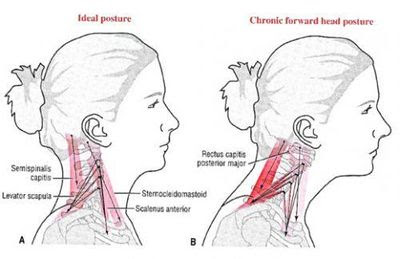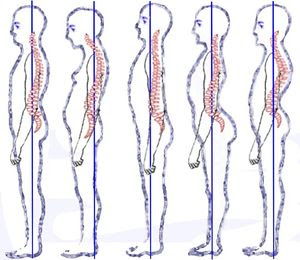
Posture is the position of your body in reaction to the force of gravity. put simply, it is how your body holds itself. There are two types of posture: Static posture (how you hold your body while being still) and dynamic posture (how you hold your body during movement).
Good posture can be defined as the position which maintains the maximum balance and stability with minimal stress on our joints and minimal consumption of energy.
We can’t improve what we can’t measure.
In general, signs of a bad posture include:
A more detailed assessment of posture can be done by a specialist but a self assessment with the help of a friend can also be helpful in identifying major issues. You can do this by following these two simple steps:
When assessing your posture, pay attention to the following structures and the corresponding most common posture abnormalities:


Another posture test that can be done easily at home (with the help of a friend) is to stand against a wall with the back of your head touching the wall and your heels 6 inches from the wall. Your shoulder blades and buttocks should be touching the wall. Measure the distance between the wall and your neck and the distance between the wall and the lower back curve. Both these measurements should be less than 2 inches.
The most important thing you can do to maintain a good posture is to avoid being in the same position for more than 30 minutes. Try to alternate between between the following 3 positions:
One way of doing this while working is to use the timer on your phone to give you a nudge every 30 minutes (I prefer it to be a silent nudge, otherwise it becomes annoying). Apple watch includes a haptic sensor that can detect your movement and can be used to give you a reminder to move every 30 minutes.
Moving every 20-30 minutes is arguably more important than changing positions alone. Taking regular breaks from sitting by performing light exercises has been shown to improve health compared to prolonged standing alone. Some researchers have proposed that the benefit from changing positions regularly actually comes from the rise in heart rate which accompanies changing positions. The activity doesn’t have to be intense but should be enough to raise your heart rate above your resting rate.
Another easy to implement hack is to wear comfortable low heeled shoes. Barefoot shoes which mimic barefoot foot posture while standing and wa;king are becoming more and more accessible. These shoes are likely to be better for maintaining a good posture because shoes that change our natural foot posture can affect the way we walk and can have negative effects on our overall balance which can accumulate over time.
Sitting is one of the major causes of poor posture. The sitting position causes a reduction in the curvature of the lower back and an increase in pelvic forward tilt when compared to standing. Prolonged sitting can result in the chronic lower back pain and impairment of the balance between the pelvis and the spine. Chairs with lower back support have been shown to lessen the effect of sitting on the lower back and pelvis.
Studies have shown that sitting upright with both feet on the floor, avoiding crossing of legs and keeping your arms close to the body can reduce load on your joints and therefore reduce the effect of sitting on your posture.
Sitting and looking at a screen for prolonged periods can also cause weakening of the hamstrings, muscles of the back and neck which cause the postural positions described above. The most important exercises to mitigate these effects are:
Exercises at home:
Exercises at the gym:
One of the most common causes of a slumped neck and shoulders is the use of the smartphone. When we angle our heads down to look at our phones, we create more strain on our neck. It is estimated that a 60 degree tilt in the angle of the neck can create pressure equivalent to 6 times the weight of the head in the neutral position. Here are a few specific tips that may help reduce smartphone slump:
Finally, it is important to remember that poor posture develops over many years and often starts during childhood. It takes time to reverse the effects of sitting and sedentary behaviours. But the good news is, it’s never too late. Training at any age and at various degrees of postural imbalances can always be helpful. This is why consistency is key. Aim to incorporate these practices into your daily or weekly habits and with time you will start to notice an improvement. Every step you take will help you get there.
https://pubmed.ncbi.nlm.nih.gov/28690547/
https://pubmed.ncbi.nlm.nih.gov/26308477/
https://pubmed.ncbi.nlm.nih.gov/24704421/